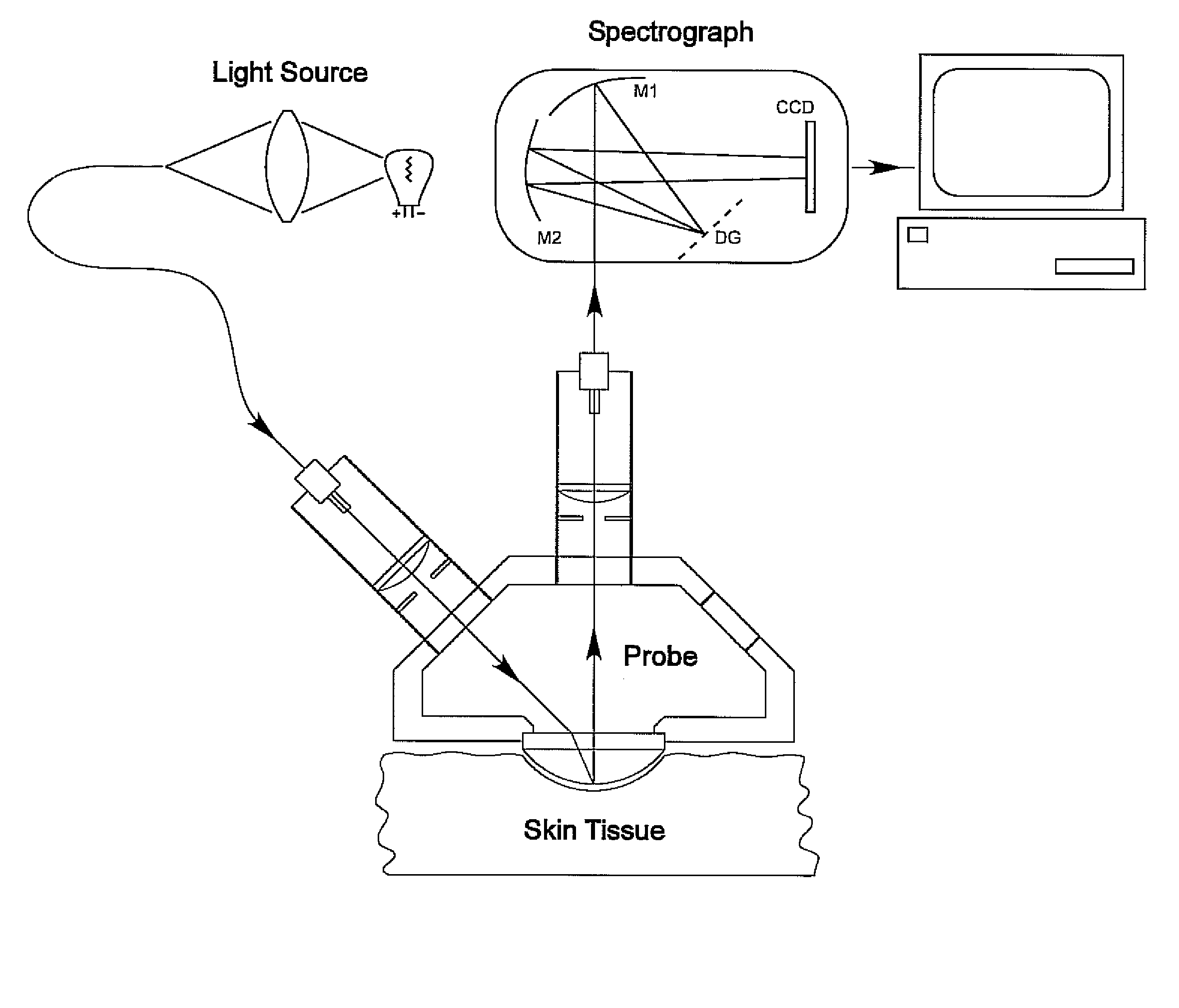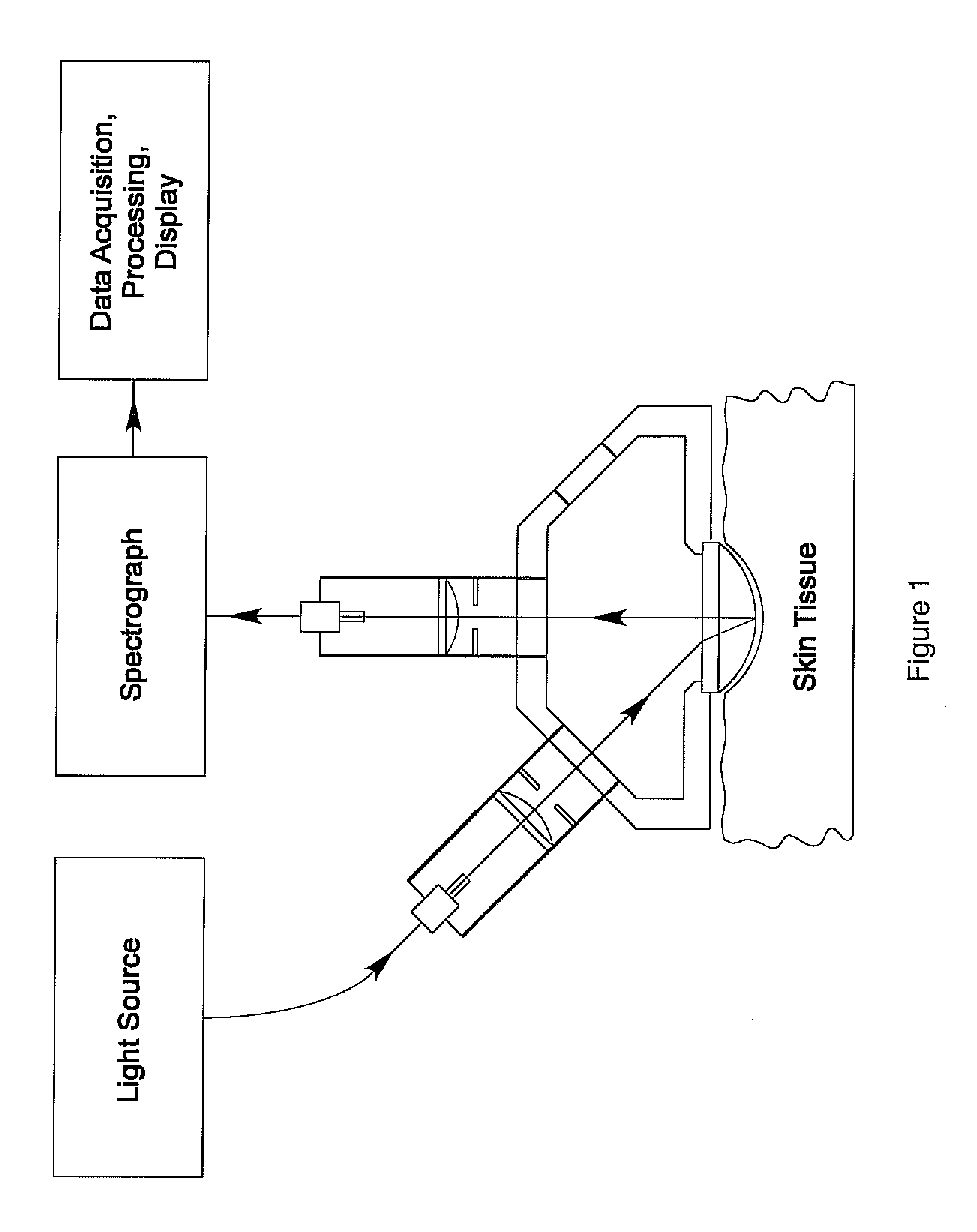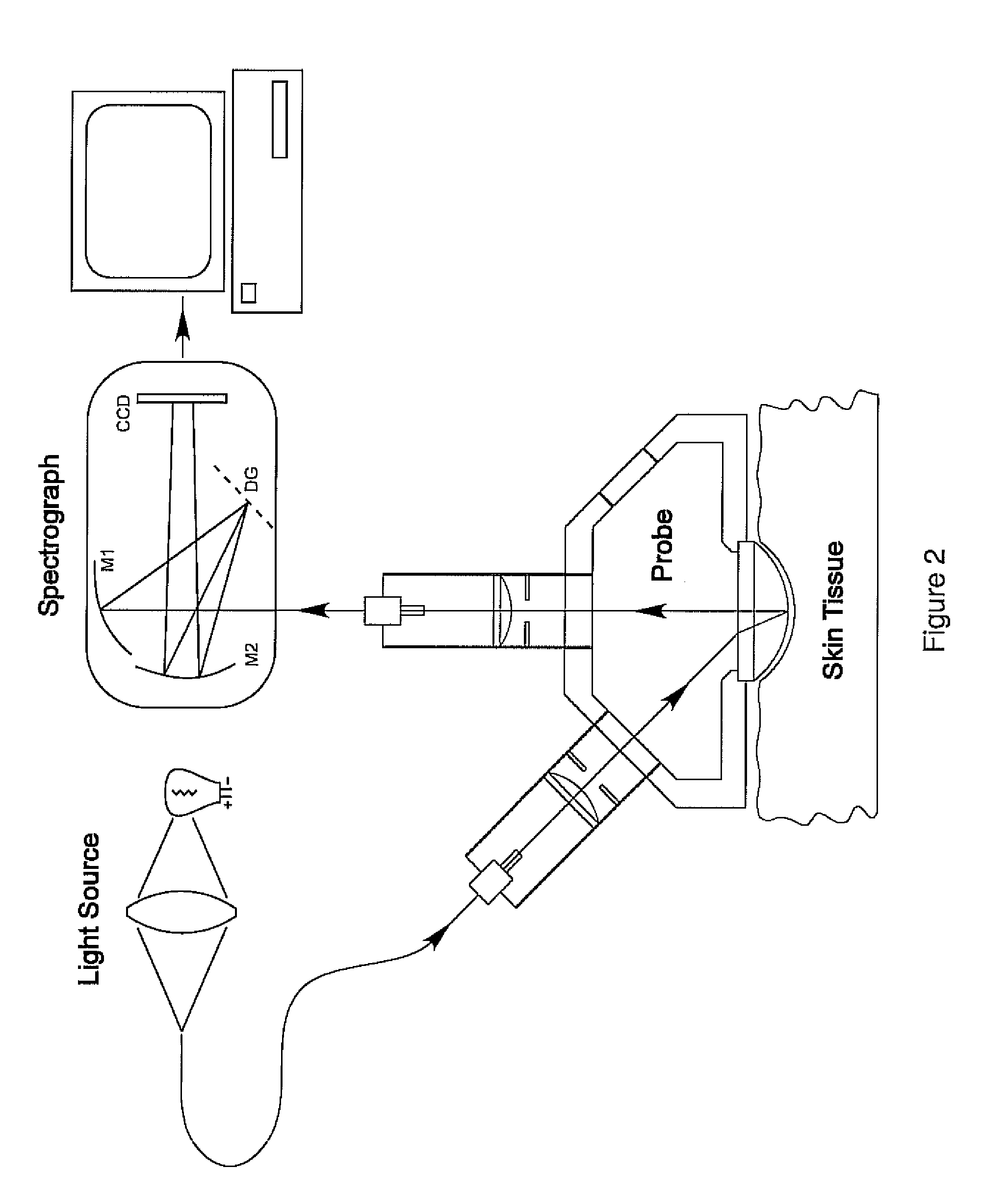Noninvasive measurement of carotenoids in biological tissue
a carotenoids and biological tissue technology, applied in the field of optical techniques for measuring compounds, can solve the problems of high cost, low accuracy, and inability to accurately detect carotenoids, and achieve the effects of low cost, high accuracy, and low cos
- Summary
- Abstract
- Description
- Claims
- Application Information
AI Technical Summary
Benefits of technology
Problems solved by technology
Method used
Image
Examples
example 1
[0054]An experimental apparatus suitable for reflection-based measurements of carotenoids in human skin is schematically shown in FIG. 2. The apparatus includes a probe head module 202 which contains the light beam delivery and collection system, a light source and detection module 204 that contains a light source and a light dispersion, detection, and analyzer system, and a computer 210 for data acquisition, processing, and display. The light module is designed as a hand-held beam delivery and collection device with a lens that can be brought in direct contact with the diffusively scattering skin tissue site (e.g. a finger of the hand) and that allows the tissue to be pressed against the lens.
[0055]As excitation source, the light output of a BRL 50 W tungsten halogen lamp (Ushio, Inc.) is used. The light is in optical communication with the probe module such that the excitation light is routed through an optical multimode fiber into the probe module during operation. The light sour...
example 2
[0062]To set the absorption properties of the various chromophores encountered in skin into perspective, model absorption spectra are shown in FIG. 3. The three main absorbers in living human skin tissue are oxygenated hemoglobin, HbO (dashed line), deoxygenated hemoglobin, Hb (solid thin line), and carotenoids (shown as an example for beta-carotene as solid fat line). Strong interference of HbO and Hb with the carotenoid absorption exists in the 350-460 nm region, while a spectral window of reduced interference exists in the 460-500 nm range. The magnitude of the interference, of course, depends strongly on the concentration of the blood chromophores present in the measured tissue volume, and can be so high that it overwhelms the skin carotenoid absorption. The pressure technique used in the reflectivity measurements leads to a strongly increased contrast between carotenoid absorption and the absorption background caused by HbO and Hb. Furthermore, by converting HbO into Hb while b...
example 3
[0063]The index finger of the left hand was pressed against the lens of the apparatus of FIG. 2 for 15 seconds while the tissue area in contact with the lens was illuminated with the white excitation light. Immediately after pressing the finger onto the reflectivity probe head lens, reflection spectra are acquired, processed, and monitored in near real-time on the computer monitor (proving an updated spectrum every second. This allows one to monitor gradual changes in the reflectivity spectrum caused by the changing HbO / Hb balance in the measured tissue volume.
[0064]Specifically, one sees the gradual disappearance of the double-band HbO feature in the 500-600 nm range, and therefore one is able to determine the best time to record an optimal reflectivity spectrum for the derivation of skin carotenoid levels. An optimal reflection spectrum obtained in this way for the index finger of the left hand of a healthy volunteer subjects is shown in FIG. 4. The data are plotted as percent ref...
PUM
 Login to View More
Login to View More Abstract
Description
Claims
Application Information
 Login to View More
Login to View More - R&D
- Intellectual Property
- Life Sciences
- Materials
- Tech Scout
- Unparalleled Data Quality
- Higher Quality Content
- 60% Fewer Hallucinations
Browse by: Latest US Patents, China's latest patents, Technical Efficacy Thesaurus, Application Domain, Technology Topic, Popular Technical Reports.
© 2025 PatSnap. All rights reserved.Legal|Privacy policy|Modern Slavery Act Transparency Statement|Sitemap|About US| Contact US: help@patsnap.com



